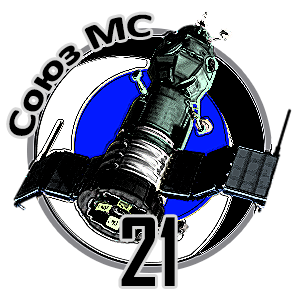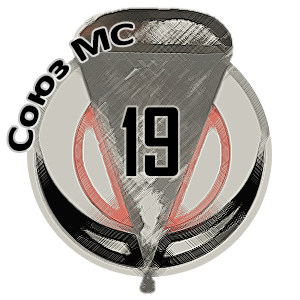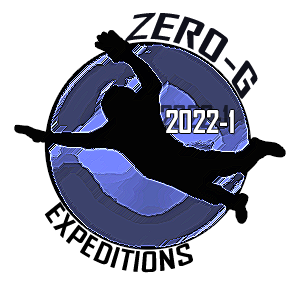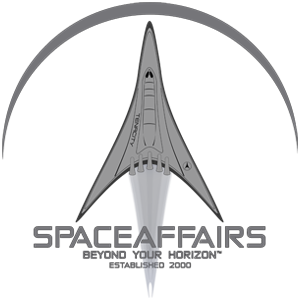
Miss Universe
Die Astronautin
by Tim Cappelmann (D) August 2017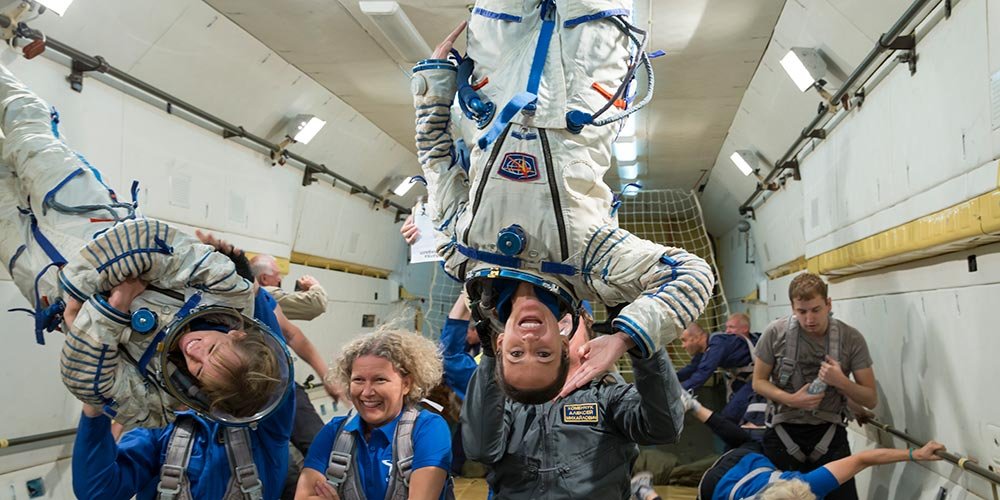 Sixty-five women have already been to space – but so far, no German. A fighter pilot and a meteorologist want to become the first and fly to the International Space Station (ISS). Our reporter joined them during training in Russia.
Sixty-five women have already been to space – but so far, no German. A fighter pilot and a meteorologist want to become the first and fly to the International Space Station (ISS). Our reporter joined them during training in Russia.
Somewhere over Russia an Ilyushin-76 speed earthward. In the cabin, Eurofighter pilot Nicola Baumann is grappling with a chocolate egg that is floating through the room with Baumann following behind, her mouth wide open, ready to snap it up at any moment – not an easy task when you are weightless! The many spotlights in the ceiling shed a bright glare; below us, gym mats, above us, gym mats. Or is it the other way around? Above and below no longer exist. Alongside Baumann, Insa Thiele-Eich is rowing her way through an ocean of water droplets, trying to swallow them. The aircraft’s four turbines emit an even hum, and as long as they continue to do so, everything is going to plan. At 6000 meters’ altitude, the crew in the cockpit slow the aeroplane right down again, and we flop back onto the mats.
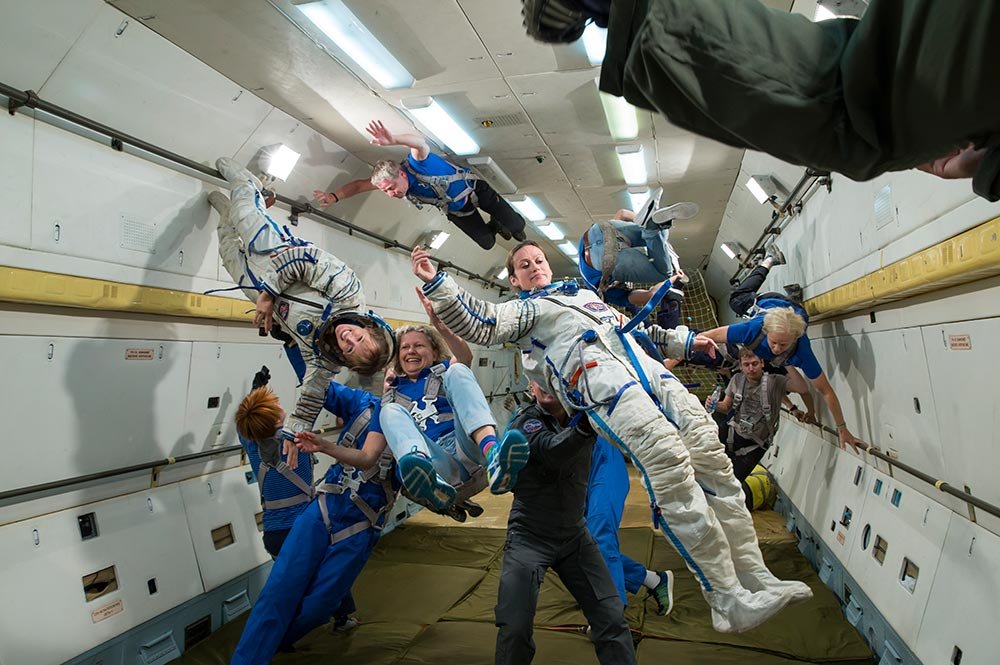 Insa and Nicola during a parabola
Insa and Nicola during a parabolaThis zero-gravity flight at the Gagarin Cosmonaut Center in Swjosdny Gorodok, 50 kilometres northeast of Moscow, is one of the first stages of astronaut training – and German Air Force pilot Nicola Baumann, 32, is one of two candidates for a job in space. Or to be more exact, she is working toward a ticket to the International Space Station, ISS. Doctor of meteorology Insa Thiele-Eich, 34, is the other candidate. Both were hand-picked from among 400 candidates in a lengthy selection process. Usually, such “casting” according to the strict criteria of the German Aerospace Center is performed for the European Space Agency, ESA, but this time it’s for a private foundation. ESA last recruited trainees for its astronaut corps in 2009, and a female German candidate has so far never made the grade. The Bremen-based initiative “Astronautin” (female astronaut) aims to change that and send a German woman into space for the very first time. It is quite independent of ESA funding and entirely privately funded. In the end, half a dozen candidates remained. After their final interview with the selection board, the six women learned whose dream would be kept alive and whose not. “There was no joy in it,” says Thiele-Eich, recalling the moment, “I comforted the others and actually forgot to congratulate Nicola.” It took her a couple of days to realise that she would now get the chance to leave planet earth far below her.
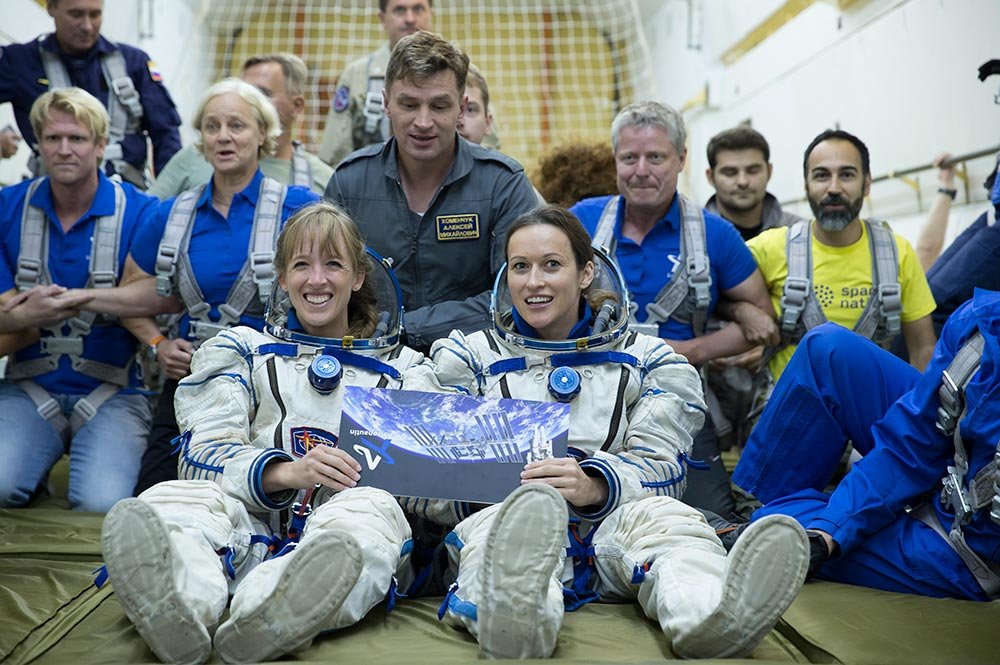 Insa Thiele-Eich and Nicola Baumann, participants of the German project "Die Astronautin"
Insa Thiele-Eich and Nicola Baumann, participants of the German project "Die Astronautin"Shortly before takeoff on board the Ilyushin, the world’s largest zero-gravity aircraft. “If any problems arise,” says our Russian trainer with a broad grin, “go to the tailgate, jump out, and your parachute will open; enjoy the flight.” The Russians on board are more relaxed than I am. So are fighter pilots, which is why after listening to the safety instructions, I decide to stick close to Baumann, the premise being that someone who shoots through the sky at Mach 2 several times a week in a Eurofighter will also be able to hop safely out of this airplane if need be. But of course, we don’t crash. These Ilyushins are sturdy aircraft. The parachutes at our bellies, on the other hand, weigh so heavy that I suspect they are leftovers from World War II and will no longer work. I guess they are just intended to get us used to the g forces that will press us down against the cabin floor with twice the force of gravity when the plane climbs steeply.
Eleven times over, the pilots take the airplane up from 6000 to 9000 meters and then at the very top, the vertex, tip it nose down into a steep descent. While the plane describes this curve – the parabola – a state of weightlessness exists on board for almost 30 seconds. Or chaos! The ESA calls these manoeuvres “formation exercises.” Along with the prospective astronauts, there are also a dozen other free-floating passengers on board, entangled, upside down and floating around. The whole thing takes two hours and is made possible by Space Affairs, a private company that specialises in adventure flights like this one. This is Baumann and Thiele-Eich’s first experience of weightlessness, and still, they succeed in climbing into their Russian space suits. Mission accomplished. “It’s an addictive feeling, one I won’t forget in a hurry and definitely hope to repeat,” says Baumann later.
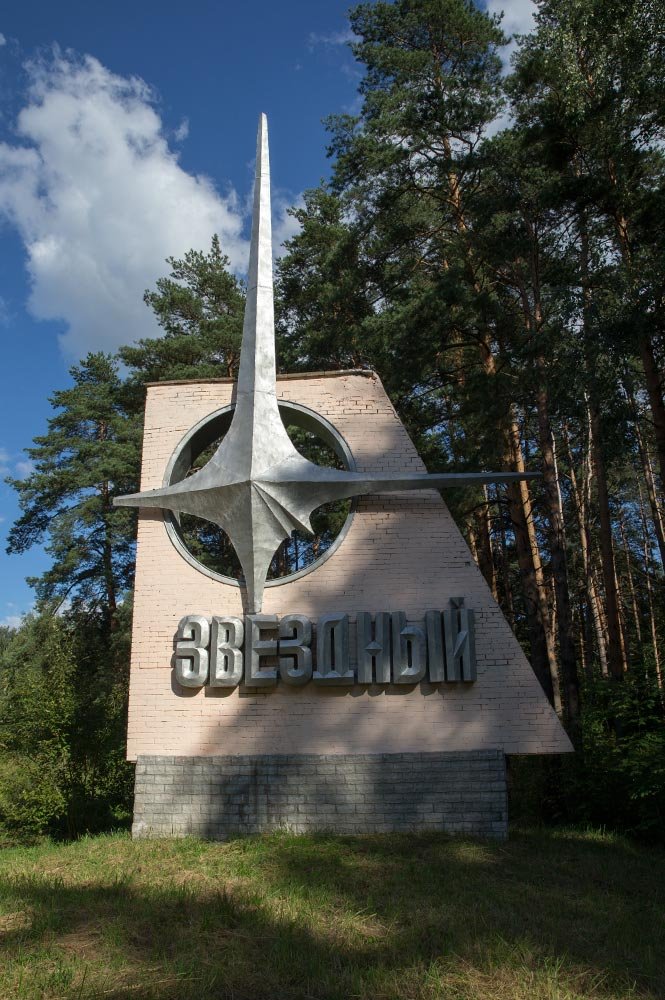 The world famous iron city sign of Star City
The world famous iron city sign of Star CityThat’s not how everyone feels about it. For some members of the group, the dream of space flight dissolved into transparent sick bags. Then it was off to the front with them to take a seat and buckle up. During the walk of shame after landing, they were forced to carry the bag all the way to the bus on the apron because the aircraft has no bins. That’s Russian humour for you. The car radio is playing “It’s The First Day Of The Rest Of Your Life.” It feels good to have the ground beneath our feet once more.
Swjosdny Gorodok (Star City) was a highly restricted military facility during the Soviet era, and even today it feels like a huge barracks. Six thousand inhabitants, numerous barriers, even more, myths. Artificial lakes, a hospital and a supermarket for cosmonauts and their families. Hardly a room here is without a wall calendar with a photo of Putin sporting black shades and talking on the phone. This is where the heart of Russian space travel beats – and it beats proudly.
Ever since the 1960s, cosmonauts have been coming to Star City to prepare for a trip into space. On the outside, the facades are crumbling, but behind the yellow brick walls and heavy wooden doors, the technology is bang up to date. The aspiring astronauts familiarise themselves with the simulator for the Soyuz capsules and the ISS modules. Cosmonauts use a diving pool to practice for working outside of the space module. The aerospace centre also operates a number of centrifuges. In addition to parabolic (zero-gravity) flight, awaiting the astronaut hopefuls is a spin cycle of up to 5 g, the force similar to the physical pressure exerted during a rocket launch. Baumann is familiar with tests like these from the Air Force, while for Thiele-Eich this is her first time in a centrifuge. She does a lot of meditating and can keep her breathing calm. The physicians are impressed with her pulse.
The Russians were the first humans in space, and since Yuri Gagarin first orbited the earth on April 12, 1961, he has counted among Russia’s top five national heroes. Our group pauses briefly in front of his statue and lays a flower there. At the museum, we encounter even more space heroes. The museum director gives us a personal guided tour of the exhibition. She says, “None of our cosmonauts ever behaved like a star because just he was up there with the stars. They all came back humbled by the experience.” The only people flying to the ISS at present are the Russians – the world’s leading space nation.
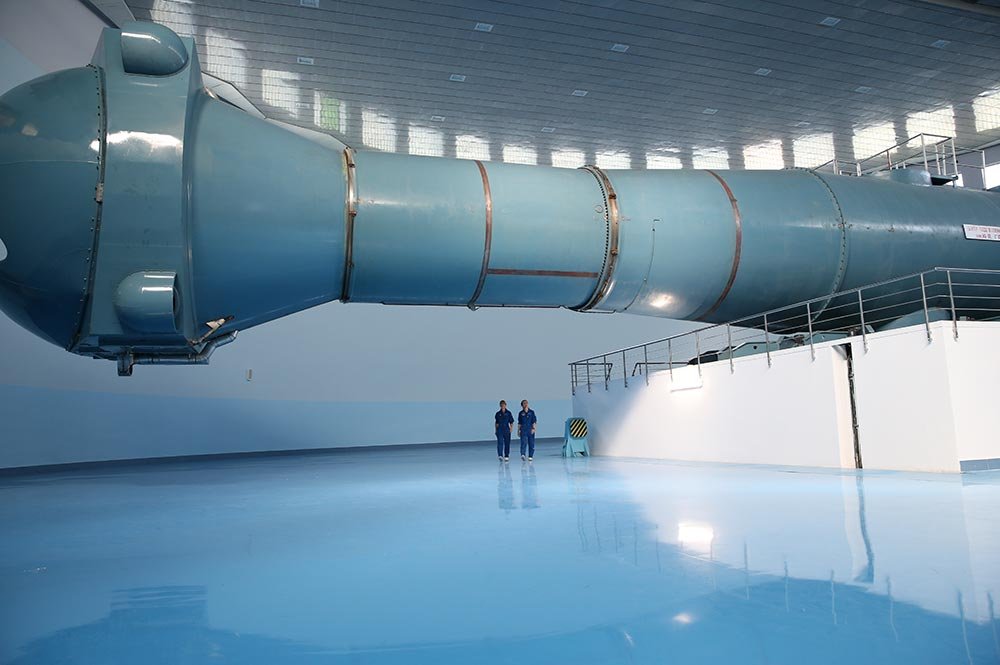 Insa and Nicola walking under the huge TFS-18 centrifuge, GCTC
Insa and Nicola walking under the huge TFS-18 centrifuge, GCTCFor anyone aiming for the stars, Swjosdny Gorodok is a good starting point. There are some hurdles to be taken before the four-day trial training becomes a two-year course for Baumann and Thiele-Eich. Ultimately, only one of them will be sent into space, the first German woman up there a freelance astronaut, her flight privately financed. The other will remain on the ground as a back-up, so say the rules. As far as equal rights go in space travel, Germany is lagging behind. The Russians, Americans, Italians and British have all sent women into space. And Western Europe’s space nation number one? Not a single one. “For us, a high-tech country, that can’t be true,” says Claudia Kessler, 52, a woman with a clear message and a clear mission. She is in Star City with her two protégés.
As one of the most experienced managers in the astronautical industry, for the past 25 years, she has also been involved in its commercialisation. She knows everyone in the space community, and everyone knows her. In 2016, Kessler started the Astronautin initiative. She organised the selection procedure and persuaded former ESA trainers to work for the foundation. The lion’s share of the almost 50 million euros that training and a mission to the ISS will cost still have to be raised, but Kessler is confident she will find the rest of the money, too.
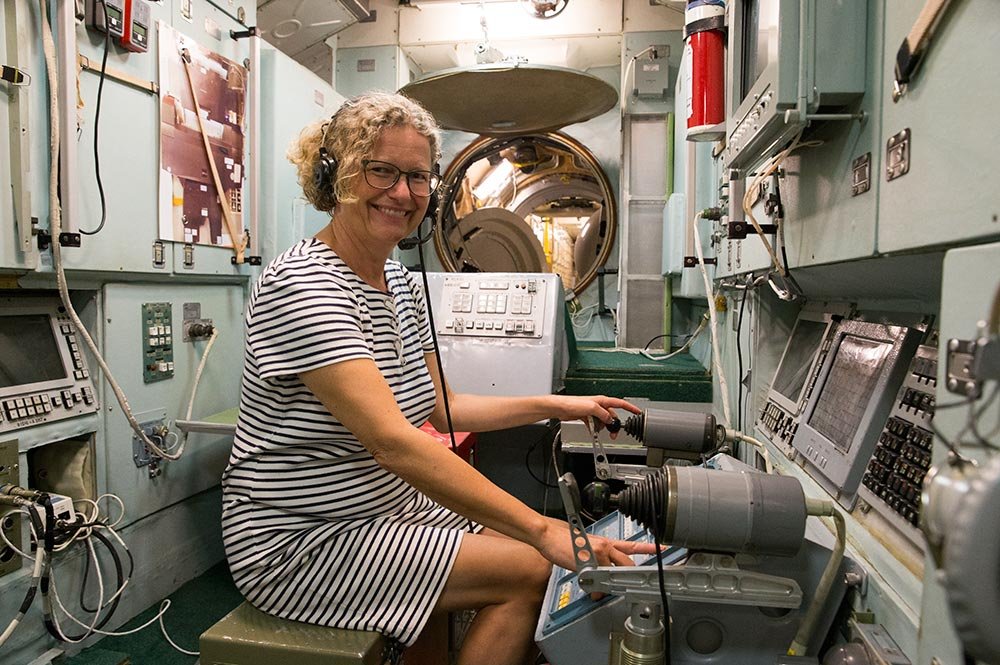 Claudia Kessler, founder of "Die Astronautin" inside the ISS simulator, GCTC
Claudia Kessler, founder of "Die Astronautin" inside the ISS simulator, GCTCBy 2020, the first female German astronaut could be on her way to spending two weeks living and floating in the ISS, to take part in weightlessness research with a special focus on medical and physiological changes in the female body. The earthly mission of the space heroines: to be a role model for girls and young women and encourage them to train for jobs in science and technology – to show them they could do it, too! All that’s needed now is for the major sponsors to finally come on board, bringing large sums of money with them. The fact that Audi is funding a new lunar rover encourages Kessler in her search for suitable partners.
Most recently, she won Airbus over to her project. To her, 2018 is a crucial year and one in which space travel will feature prominently: This coming summer, the ESA astronaut Alexander Gerst will become the first German to take command of the ISS. In the fall, the world’s largest astronautical congress, the IAC, comes to Bremen. Add to these the flights run by private companies, like Elon Musk’s Space X and Richard Branson’s Virgin Galactic, which were initially ridiculed by state institutions and are today driving the industry. “Space travel is currently experiencing a measure of hype we have not seen for a long time. We all want to make the most of it,” says Kessler.
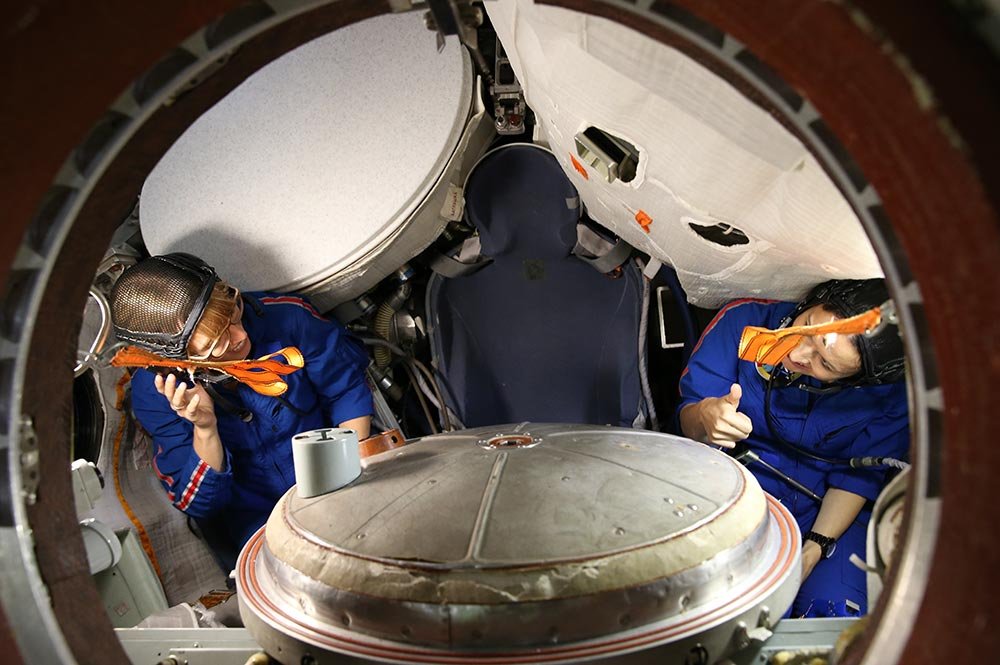 Insa and Nicola during a familisation training inside the Soyuz-MS simulator, GCTC
Insa and Nicola during a familisation training inside the Soyuz-MS simulator, GCTCWay back in 1987, the TV series “Star Trek” already changed its legendary intro from “Where no man has gone before” to the gender-neutral “Where no one has gone before.” Nicola Baumann and Insa Thiele-Eich are risking a great deal to become a female role model in a space suit; a bold new venture with an uncertain outcome. Eurofighter pilot Baumann was on the verge of promotion to squadron commander in the German Air Force; meteorologist Thiele-Eich put her career on the ice at Bonn University, where she is involved in basic research on climate and weather forecasts. “The stakes are high, but so is what we stand to gain,” says Baumann. She hails from Upper Bavaria, where she grew up amid a family of hang-gliders. Her sister became a Lufthansa pilot. She was too short – 1.60 meters – to land at an airline, but the German Armed Forces gave her the chance to fly. She took it. She was 19 when she took off for the first time, in a propeller aircraft, and at 22, she was shooting through the clouds in a Tornado. More than 10 years of experience handling fighter jets is certainly no harm if you are planning to manoeuvre a spaceship. At present, she is working toward a master’s degree in aerospace technology on a distance learning program with Purdue University in Indiana, an elite school for astronauts. In the rare free time left to her when she’s not with her boyfriend, learning Russian or mountain biking, she enjoys knitting. “Flying to the ISS will not mark the end of my dream. but a beginning,” she explains, “I am interested in pioneering work, like living on a moon base and pushing humankind’s horizon that little bit further.”
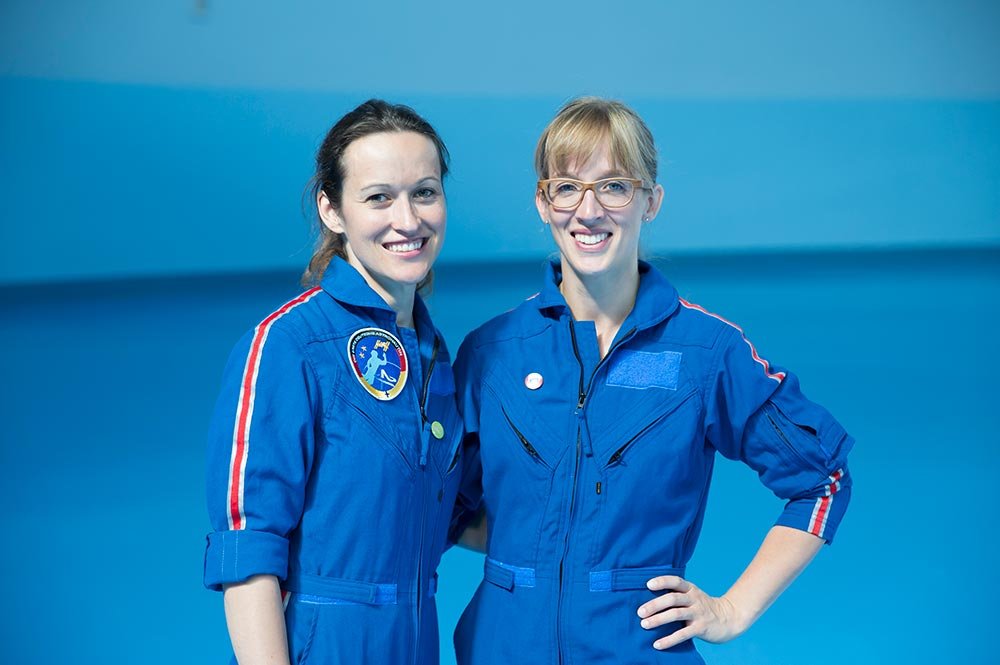 The finalists of "Die Astronautin" Nicola Baumann and Insa Thiele-Eich
The finalists of "Die Astronautin" Nicola Baumann and Insa Thiele-EichInsa Thiele-Eich grew up with these kinds of ideas because she comes from a family with a history of space travel. Her father, Gerhard Thiele, flew into space for the ESA in 2000. His advice to his daughter: Be yourself, don’t try to be someone you’re not. Enjoy the trip and never forget to have fun with it. He once pointed out the galaxy Andromeda to her on a bright, starry night in the mountains – she was eight years old at the time and immediately captivated by the infinite vastness of space. “A life-changing experience. I have been pondering the existential questions ever since: Why are we here? Where do we come from? Does other life exist?”
One of the two women should come a little closer to finding the answers in space. They are following the same path to the ultimate lift-off together, but only one of them will actually make it into space. No mission is without its secret back-up plan, however, and Thiele-Eich actually lets the cat out of the bag: “Our great ambition is to fly to the ISS someday and to orbit the moon. We would then be happy to share that experience.”
SPACE FOR ALL
SPACE AFFAIRS:
“We are all astronauts” is this private astronautical adventure company’s motto. With seasoned space expert Andreas Bergweiler at the helm, Space Affairs organises everything from zero-gravity experiences to fighter jet flights and also sponsors the astronauts’ training.
Shortly after appearing on the report in Lufthansa Exclusive, the candidate Nicola Baumann announced to leave the program „Die Astronautin“. Her successor will be the 38-year-old Cologne astrophysicist Suzanna Randall
This story first appeared in Lufthansa Exclusive, the frequent traveller magazine
Text © Copyright Tim Cappelmann
Photos © Copyright Markus Gloger
Tim Cappelmann
August 2017

